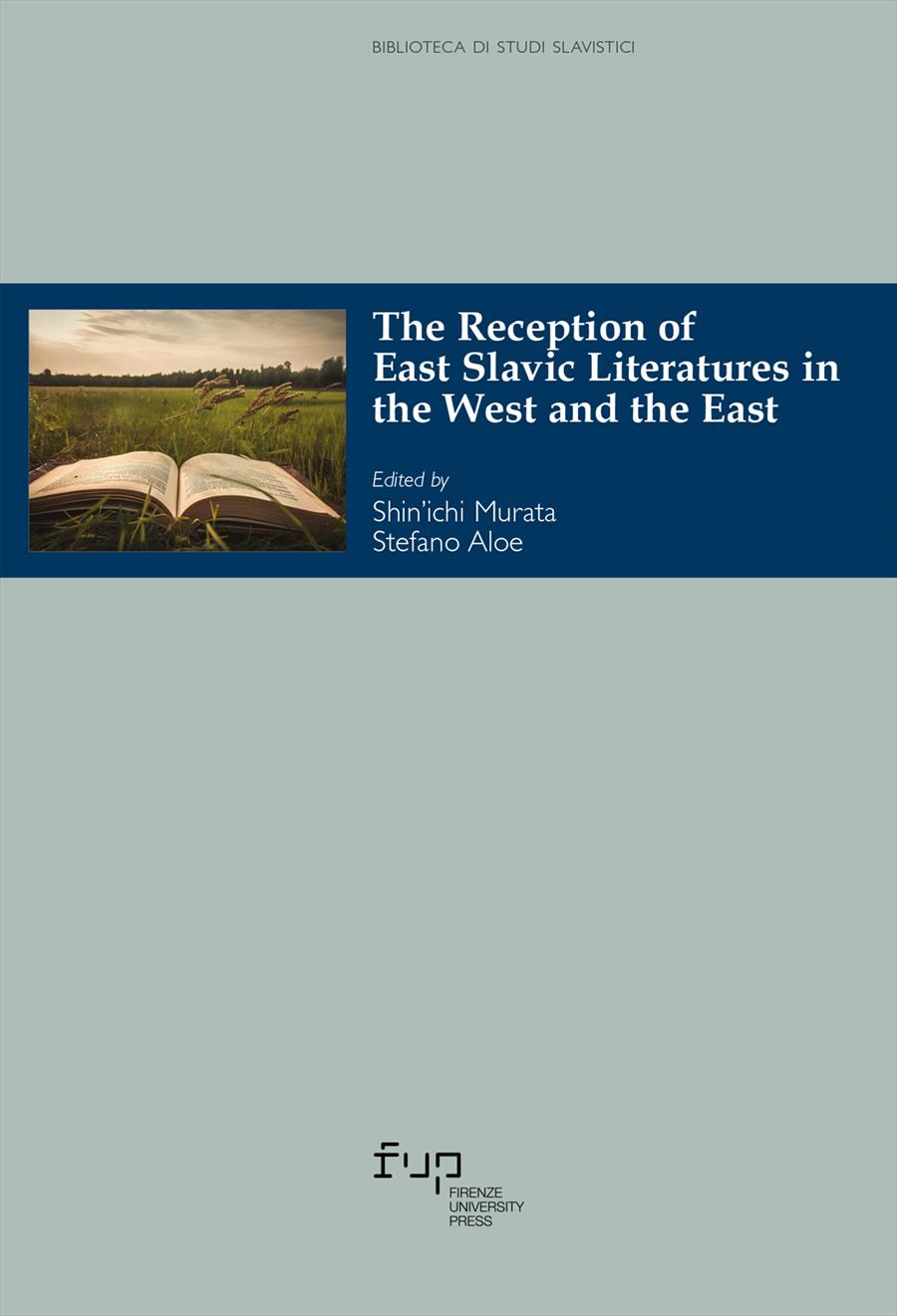- The Reception of East Slavic Literatures in the West and the East
- Edited by Shin’ichi Murata, Stefano Aloe
Как закалялась сталь в Восточной Азии
- Go Koshino
- © 2023 Author(s) |
- CC BY 4.0
- DOI: 10.36253/979-12-215-0238-1.18
How the Steel Was Tempered in East Asia. Nikolai Ostrovsky’s novel How Steel Was Tempered (1932-34) tells the story of a young Ukrainian man named Pavel Korchagin who sacrifices his life and body to forge a steel-like spirit amid revolution, civil war, and postwar socialist construction. Although his physical injuries, which left him paralyzed and even blind, looks somehow grotesque, but his heroic self-sacrifice also had the power to inspire young readers. Regarded as an exemplary work of Soviet socialist realism, it was translated into many languages and read avidly at one time by left-wing readers in the West as well as in the Communist countries in the East. It was particularly influential in China, where it is so popular that even today it is invariably named as one of the favorite books of university students. This is in contrast to post-Soviet Russia today, in which the novel has lost the privileged position it once enjoyed and is no longer widely read. In China under the socialist regime, Ostrovsky’s novel was published in large numbers as suitable reading for young people and incorporated into school education. However, their active introduction in the public sphere alone does not explain their popularity. Chinese readers seem to have become deeply emotionally involved in the protagonist’s unsuccessful love affair with Tonya, a young girl whose bourgeois gestures and characterization must have been considered negative. As a result, the Soviet ideological novel has brought an unexpected meaning of European-style romantic love for Chinese readers. This presentation will trace the reception of Ostrovsky’s novel and the changes in the heroine Tonya’s image by comparing five adaptations: two Soviet films in 1942 and 1957, a Chinese lianhuanhua (serial picture book) in 1972, a Japanese manga in 1975, and a Chinese TV drama in 1999.
- Keywords:
- Socialist Realism,
- Nikolai Ostrovsky,
- adaptation,
- China's reception,
- Japan's reception,
Keio University, Japan - ORCID: 0009-0001-2361-2697
- Green, Fredrick H. 2017. “The Cultural Indigenization of a Soviet ‘Red Classic’ Hero: Pavel Korchagin’s Journey through Time and Space.” In The Making and Remaking of China’s “Red Classics”: Politics, Aesthetics, and Mass Culture, ed. by Rosemary Roberts and Li Li, 136-55. Hong Kong: Hong Kong UP.
- He, Donghui. 2010. “Coming of Age in the Brave New World: The Changing Reception of How the Steel was Tempered in the People’s Republic of China.” In China Learns from the Soviet Union, 1949-Present, ed. by Thomas P. Bernstein, and Hua-Yu Li, 393-420. Blue Ridge Summit, PA: Lexington Books.
- Li, Yan. 2017. China’s Soviet Dream: Propaganda, Culture, and Popular Imagination. London: Routledge.
- McGuire, Elizabeth. 2017. Red at Heart: How Chinese Communists Fell in Love with the Russian Revolution. Oxford: Oxford UP.
- Yu, Miin-Ling. 2002. “A Soviet Hero, Pavel Korchagin, Comes to China.” Russian History 29 (2-4): 329-55.
- [Исико, Дзюн [Исико Тадаси]. 1963. “Два Павла Корчагина: на примере Как закалялась сталь Донского.” Дзисю дзёэй 2: 34-6]. 石子順(石河糺). 1963. 「二人のパーベル・コルチャーギン:ドンスコイの「鋼鉄はいかに鍛えられたか」を中心に」『自主上映』2号、34-6.
- [Кояма, Харуо. 1975. История молодости: как закалялась сталь. Токио: Кондо-сётэн]. 小山春夫. 1975. 『ある青春の物語 : 鋼鉄はいかに鍛えられたか』東京: 近藤書店.
- [Лю, Сяофэн. 1996. “Вспоминая Тоню.” Чтение 4: 84-99]. 刘小枫. 1996. 「记恋冬妮婭」『读书』第四期,84-99.
- [Островский, Николай. 1972. Как закалялась сталь, адаптировано Ся Сином, нарисовано И Цзинь. Пекин: Жэньминьмэйшу чубаньшэ]. 奥斯特洛夫斯基. 1972. 『钢铁是怎样炼成的』北京: 人民美术出版社、夏星改编、毅进画、上下.
- [Чжэн, Чэн. 2020. “Культурное наследие «дружбы между Китаем и СССР»: обучение за рубежом, реформа высшего образования и художественные произведения.” В кн. Сталинская политика на Дальнем Востоке, под ред. Тэраяма Кёсукэб 110-32. Токио: Кокон-сёин]. 鄭成. 2020. 「「中ソ友好」の文化的遺産:留学・高等教育改革と文学作品」寺山恭輔編『スターリンの極東政策』東京: 古今書院、110-32.
- Аннинский, Лев А. 1978. «Как закалялась сталь» Николая Островского. Москва: Худож. лит-ра.
- Доступова, Татьяна Г. 1978. Вторая жизнь Павла Корчагина. Москва: Книга.
- Островский, Николай А. 1969. Как закалялась сталь (Сочинения в 3-х томах, т. 1). Москва: Правда.
- Панарин, Сергей А. 2013. “Гарибальди в России.” История и современность 2: 75-106.
- Толстая-Сегал, Елена. 1981. “К литературному фону книги: ‘Как закалялась сталь’.” Cahiers du Monde Russe 22 (4): 375-99.
Chapter Information
Chapter Title
Как закалялась сталь в Восточной Азии
Authors
Go Koshino
Language
Russian
DOI
10.36253/979-12-215-0238-1.18
Peer Reviewed
Publication Year
2023
Copyright Information
© 2023 Author(s)
Content License
Metadata License
Bibliographic Information
Book Title
The Reception of East Slavic Literatures in the West and the East
Editors
Shin’ichi Murata, Stefano Aloe
Peer Reviewed
Number of Pages
326
Publication Year
2023
Copyright Information
© 2023 Author(s)
Content License
Metadata License
Publisher Name
Firenze University Press
DOI
10.36253/979-12-215-0238-1
ISBN Print
979-12-215-0237-4
eISBN (pdf)
979-12-215-0238-1
eISBN (epub)
979-12-215-0239-8
Series Title
Biblioteca di Studi Slavistici
Series ISSN
2612-7687
Series E-ISSN
2612-7679
